
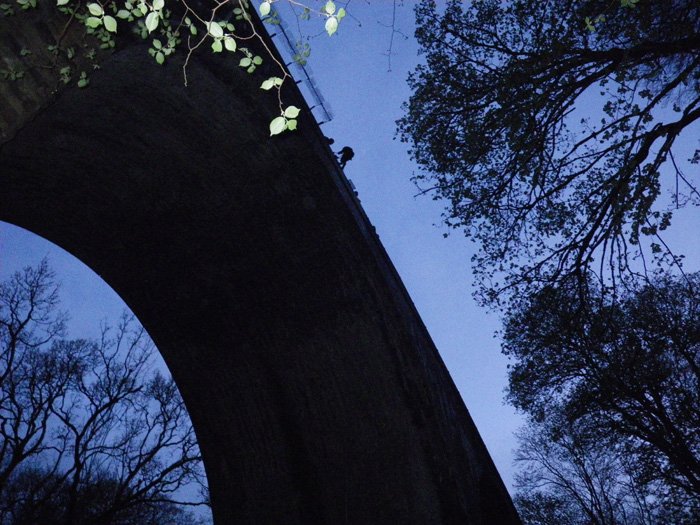

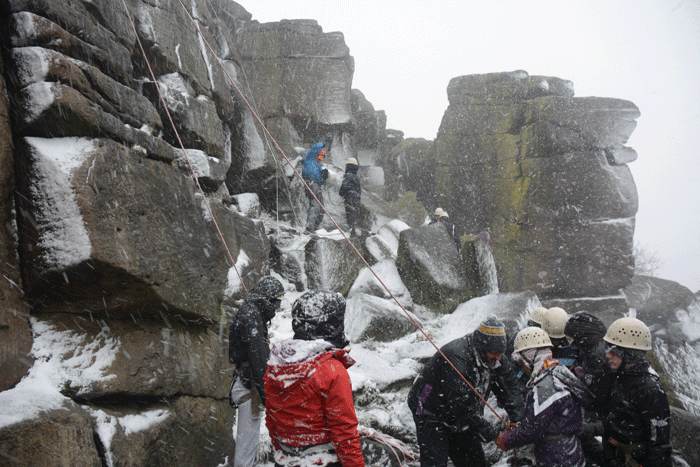


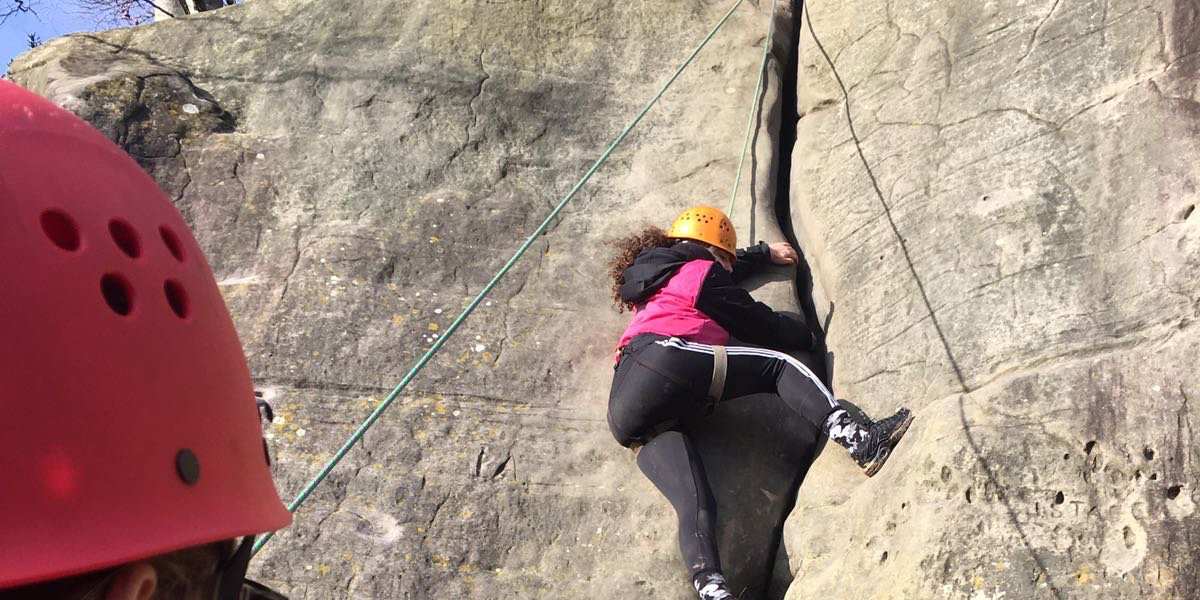
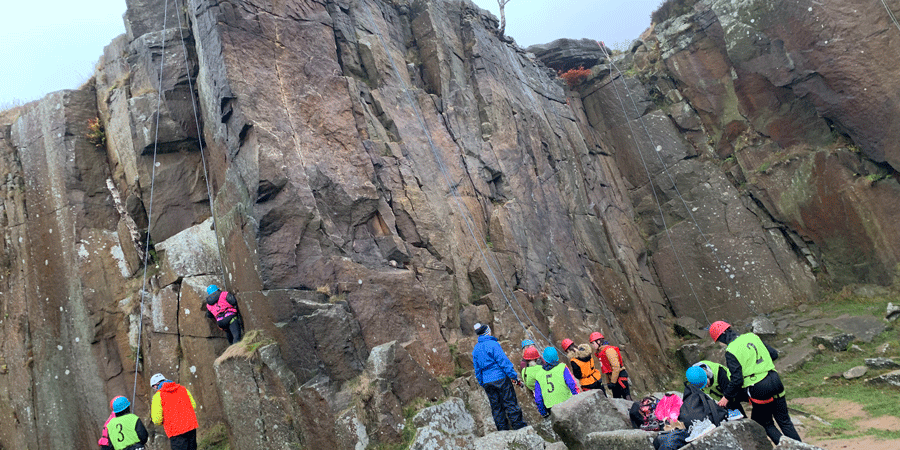







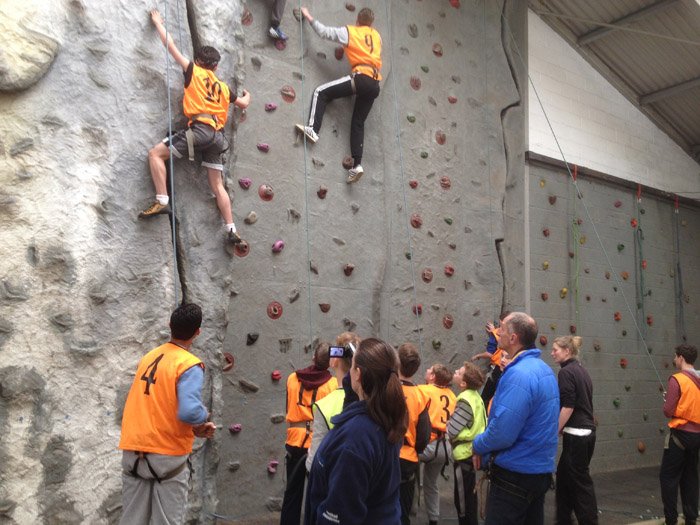

GCSE PE Rock Climbing - OCR Exam Board
At TrekCo we deliver rock climbing GCSE PE courses for each exam board - please find the details for how OCR works below.
OCR GCSE PE Climbing
With OCR, students can either be assessed indoors or outdoors. However, because of some of the criteria needed to be covered, we are only able to offer OCR courses on a residential basis, usually in the Peak District near Matlock and climbing outdoors. 3 Days (2 nights) would be required to get through the content.
The OCR criteria states that candidates must be assessed within full competitive situations. Two options are given; Lead Climbing and Speed Climbing. Lead Climbing is a highly skilled way of climbing which takes a great deal of time and experience to participate in safely, so is off the table for most students other than very established and committed climbers. That leaves Speed Climbing, so across the 3 day course we would time students over a given route so that they can compete in this way.
Most participants involved with climbing however, see competition as the inner competition with oneself to climb increasingly high grades and to improve over time as skills and decision making develop. This is very much how we interpret competition in climbing and how we would pitch the three day course.
The OCR criteria is more complex than AQA and Edexcel, hence us needing 3 days with the students to cover the content effectively. It’s broken down into Core Skills, Advanced Skills and Decision making & tactical awareness.
We guide the students on what and when to film – the easiest way is on their phones (to later upload to a school system).
CORE SKILLS – the syllabus breaks this down into a further 6 areas, all of which are easily taught. We’ve seen students consistently pick up the content quickly and positively. Everything is filmed to build supporting evidence.
1 Safety – Fit helmet / Fit Harness / Tie into harness / use of correct climbing calls and communication. This will initially be done in isolation and filmed. These skills will then be repeated and fine tuned throughout the 3 day course.
2 Knots – Tie a bowline / Tie a figure of eight. We would do this initially in isolation and film. A figure of 8 is used to tie into the harness each time they climb so students would continue to use this knot throughout the course. A bowline may be used when setting up anchors to belay (in advanced skills)
3 Route Planning – Work out how you are going to traverse the face / know the conditions you are likely to face. Repetition here is key, the more students climb, the better their decision making in terms of route choice. We fit in as much climbing as we can!
4 Bouldering – Low level traverse. We always spend some time traversing on our courses (usually on the morning on Day 1) as it’s a great way for students to experiment with / understand that weight transfer and body shape can improve their climbing. Arm extension, foot placement, stepping through and hand and feet matching can easily be demonstrated and practiced whilst traversing. We then encourage the students to use these new tools / skills on increasingly steep climbs. We always video traversing; firstly in order to build evidence, but also so students can review their footage and fine tune their technique.
5 Climbing and descending methods – Climb showing 3 points of contact / Foot Jam / Hand Jam / Palm Plant / Perform a bridge / Abseiling. The best way to get good at climbing is to climb! Students can start on easy graded routes and progress quickly. Climbing with 3 points of contact is easily coached and students will soon grasp the concept. Starting on slab climbs, we then move onto more challenging climbs as their skills and confidence progress. Different climbs highlight different skills, so our staff guide the students through a number of appropriate climbs in order to firstly develop the skills required, and then problem solve and use decision making to use the correct skill in any given situation. We will set up an abseil and teach the skills to do this effectively, initially at the crag alongside climbing, we will develop this by abseiling from a 50m disused railway viaduct on day 2 of the course.
6 Semi-direct belay – Single point belaying / Anchor the belayer / Belay a climber using a belay device. Students will be taught to belay each other whilst climbing, and then lower. Effective communication / calls are used as part of this process – again, initially filmed in isolation, this will be filmed again in full context. With OCR only one type of belay device is required to be used, so students soon become familiar with this and are able to improve their performance and consequently get a higher quality video. An instructor will tail a rope to ensure safety where needed.
ADVANCED SKILLS – here the syllabus adds some more complex skills to 2 of the areas covered as Core skills above.
1 Climbing and descending methods – ascend a mantle shelf or overhang / perform a layback / heel hook / flagging / back stepping / toe hook / abseil with a prussic. Volume of climbing is important in order to highlight these skills and we fit in as much as possible in different locations across the three day course.
2 Belay – Multiple belay / Belay a climber during a fall. Using knots learnt as part of their core skills, we teach the students how to secure a belayer using multiple anchors. Belay a climber during a fall is covered throughout as this can happen at any time.
DECISION MAKING & TACTICAL AWARENESS is an area which is covered throughout as part of an holistic approach. Candidates will be constantly making decisions whilst climbing especially as they tackle more challenging climbs. Some will be completed on sight, but as the grades get harder a few attempts / rehearsal may be needed. Reviewing of personal video or learning from another students experience / video is a valuable tool to climbing to as high a grade as possible. Self analysis and peer coaching begin to take centre stage, which is always great to see.
With a three day course, providing students are reasonably physically able and have a good attitude to learning, we have a history of helping students achieve very good scores. Teachers also tell us that moderators are very impressed with the amount of video footage that back up these grades.
